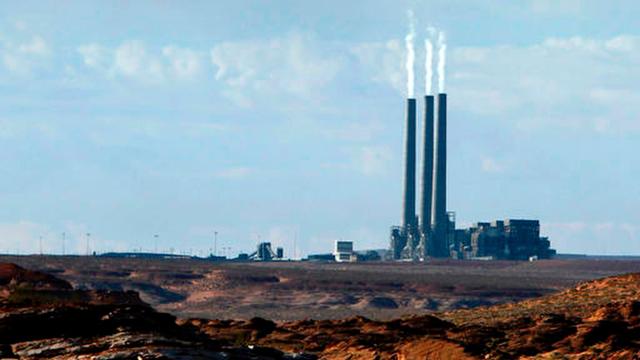The Navajo Generating Station in Arizona is closing, and that’s terrible news for the Native American communities that rely on the coal plant for their income. A new report from the Institute for Energy Economics and Financial Analysis (IEEFA) is calling on the US federal government to step in for this major economic disruption the Navajo Nation and Hopi Tribe are preparing to face.
The report, released this week, highlights how dramatic losing the power plant and the Kayenta Mine located on Navajo land that supplies it with coal will be for the tribes.
In October — which marks the start of the 2020 fiscal year — the Navajo Nation is expected to lose $US14 million ($20 million) in its fiscal year budget. By 2021, its budget will drop another $US26 million ($38 million) to $US132 million ($191 million), according to a Facebook post from Navajo Nation President Jonathan Nez. As for the Hopi Tribe, mining royalties make up 85 per cent of its budget, which fluctuates from $US18 million ($26 million) to $US21 million ($30 million).
The Navajo Nation has a plan to cope with the losses by cutting its budget. But those come with consequences for the community, which is already dealing with high unemployment and inadequate housing conditions. As for the Hopi, they have yet to release a plan to deal with the loss of income.
We reached out to both tribal presidential and chairperson offices but was not able to reach anyone in time for publication.
Federal help could relieve some of the financial stressors that come with the plant and mine closings. After all, the US government helped open the coal plant in the first place back in 1971 when the Interior Department acquired a stake in the plant’s power generation.
The report authors also point out that if the US federal government can bail out the automobile industry, it can help support these communities.
That’s kind of the whole premise behind a just transition, an idea that’s been popularised recently by the Green New Deal. Closing fossil fuel facilities without a plan for the communities that rely on them can be incredibly damaging. However, putting a plan in place for affected communities and workers can open opportunities to find new income sources.
That includes transitioning to clean energy sources that, unlike coal plants, won’t negatively impact health or the environment. The Navajo Nation is planning on investing in solar, according to a bill introduced earlier this year.
However, federal intervention — whether in the form of a disaster aid package or loan — might be necessary for the meantime. The report makes a fair point:
Bipartisan support for effective legislation is possible—a national program would affect Democratic and Republican districts alike—modelled after federal programs that helped right the Detroit auto industry; initiatives that saved the economies of Louisiana and the Northeastern US after Hurricanes Katrina and Sandy; and well-funded Department of Defence programs to buffer the community effects of military base-closings and downsizing in dozens of states.
Tribal economies are no less worthy of comparable federal intervention, and the same is true as well of struggling coalfield communities elsewhere.
As badly as US president Donald Trump wanted to revive coal, that isn’t happening. It’s dying due to economics turning against it, but that doesn’t have to mean doom for the communities that once relied on it, too.
